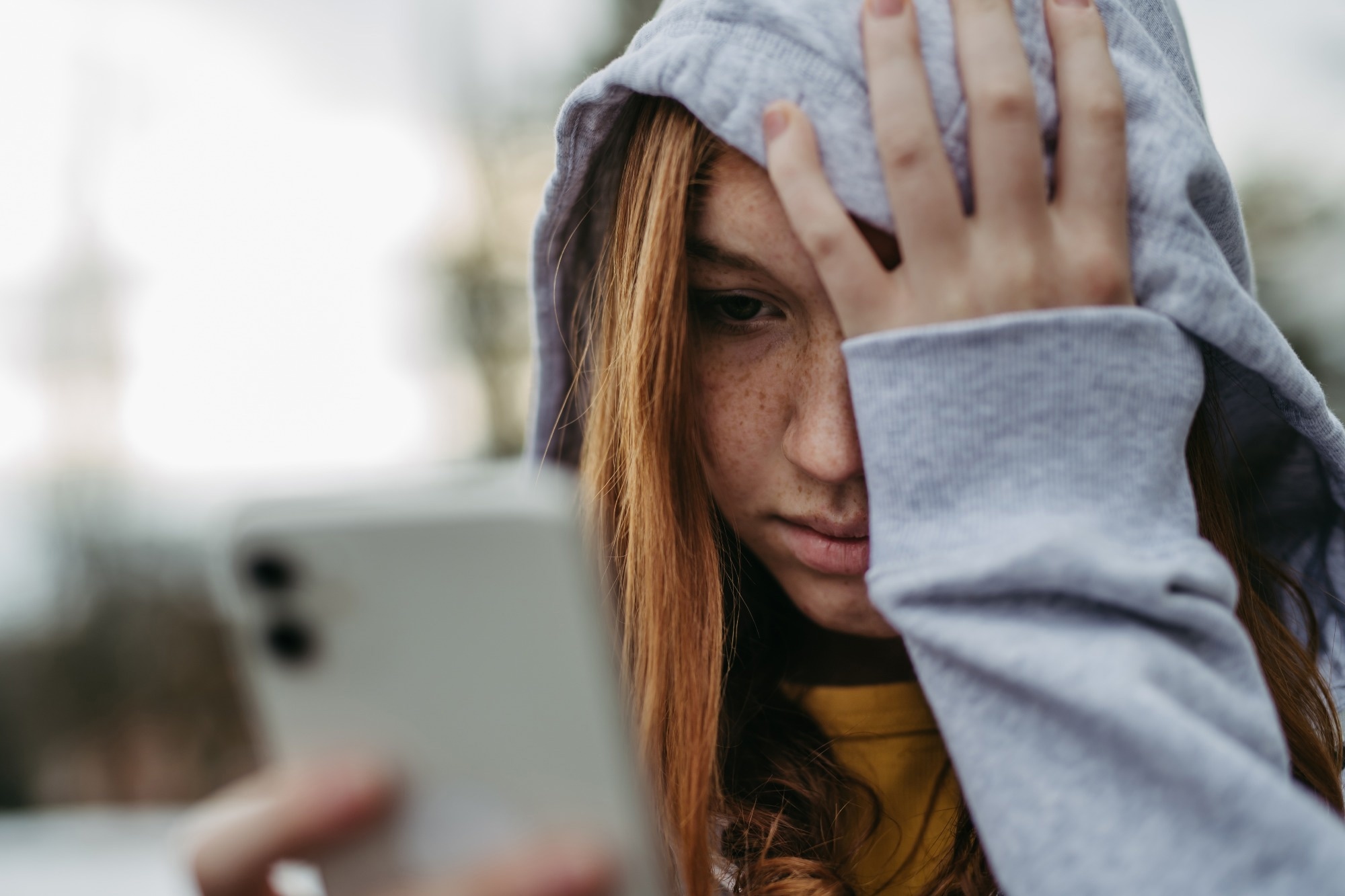New UK research reveals that teens with anxiety or depression are more emotionally affected by social media, highlighting the urgent need for mental health–sensitive digital strategies.
 Registered Report: Social media use in adolescents with and without mental health conditions. Image Credit: Halfpoint / Shutterstock
Registered Report: Social media use in adolescents with and without mental health conditions. Image Credit: Halfpoint / Shutterstock
Adolescent mental health has taken a beating over the last ten years. This coincides with increasing social media use among adolescents. A new registered report in the journal Nature Human Behavior identifies how mentally healthy adolescents engage differently with social media, versus those with mental health conditions.
Introduction
In the UK, mental health conditions may affect a quarter of 17-19-year-olds, and one in six of 7-16-year-olds. This is an increase from the 2017 prevalence of one in ten.
These adolescents could represent nearly half of the mentally ill population, affecting future social and economic productivity. This phenomenon accompanies rising social media use among adolescents. In fact, almost all youngsters between 12 and 17 years have their own social media profile.
Increased screen time is often linked to poor mental health, specifically depression, especially in girls. However, its causal role remains unknown, and many studies disagree with this conclusion. As with offline interactions, social media plays both protective and harmful roles.
A more nuanced approach would help assess how social media use affects mental health in adolescence. It may negatively impact young people with mental health conditions more than those who are mentally healthy. Again, the type of mental health condition, whether internalizing or externalizing, may affect social media use differently.
About the study
The current study explores these variations using population-wide data from the Mental Health of Children and Young People (MHCYP) study, which included survey data from more than 3,000 adolescents in England.
Multiple informants reported on each adolescent participant. Clinical rating professionals then evaluated the reports to describe the participant's mental health.
The evaluation included both the time spent on social media and the various aspects of engagement. These included self-comparison with those seen online, keeping track of online feedback such as likes, and the impact of such feedback on mood. Additionally, it included satisfaction with the number of online friendships and the authenticity of online self-presentation and sharing.
Study findings
Of the 3,340 young people in the study, aged 11–19 years, 16% had one or more mental health conditions; of these, 8% had an internalizing condition and 3% had an externalizing condition, with the remainder having other conditions or comorbidities.
With internalizing conditions like depression, the individuals think poorly of themselves, worry, and withdraw from social interactions. With externalizing conditions, people act impulsively, do not think about their actions, and take more risks.
Mentally healthy vs disturbed adolescents
Compared to healthy adolescents, those with a mental health issue spent more time on social media and were less happy with the number of online friendships. While some statistically significant differences were observed, there were no theoretically meaningful differences in online social comparison, control over time spent online, the impact of online feedback on mood, monitoring of online feedback, or honest self-disclosure when comparing adolescents with any mental health condition to those without.
Differences between Internalizing and Healthy Youngsters
Compared with mentally healthy youngsters, adolescents with internalizing disorders spent longer on social media, reported less control over online time, and were more likely to compare themselves unfavorably with others on social media. Online feedback affected their mood more severely. However, there was no meaningful difference in how they monitored online feedback.
These adolescents were also less happy about the number of online friends they had and less likely to share their lives honestly compared to healthy youngsters. However, there were no meaningful differences in authentic self-presentation.
Externalizing vs Healthy Youngsters
Youngsters with externalizing disorders spent more time on social media, compared to healthy youngsters. They had similar control over online time and satisfaction with online friendships. Their mood was more heavily impacted by online feedback, compared to healthy adolescents.
Internalizing vs externalizing disorders
Youngsters with internalizing conditions were more prone to social comparison than those with externalizing conditions. They spent more time online and were dissatisfied with the number of online friends they had.
The type of disorder did not meaningfully affect most other dimensions of social media use differentially, though findings for lack of control over time spent online were inconclusive when comparing these two groups.
Conclusions
The report demonstrates the increased and differential impact of social media on young people with mental health conditions. The most significant difference was that youngsters with mental health conditions spent more time on social media. However, the self-reported nature of this data requires further verification.
People who form offline social connections are less likely to suffer physical and emotional harm. This appears to extend online, as youngsters with poor mental health were less satisfied with the number of online friends they had.
These findings suggest the relevance of behavioral techniques for youngsters with internalizing disorders, teaching them to reduce social comparison and regulate the impact of online social media feedback on their mood.
“This highlights aspects of social media use that might present an increased risk to this already vulnerable group and provides a window for future research to ensure that the digital world is safe for all children regardless of mental health status.”